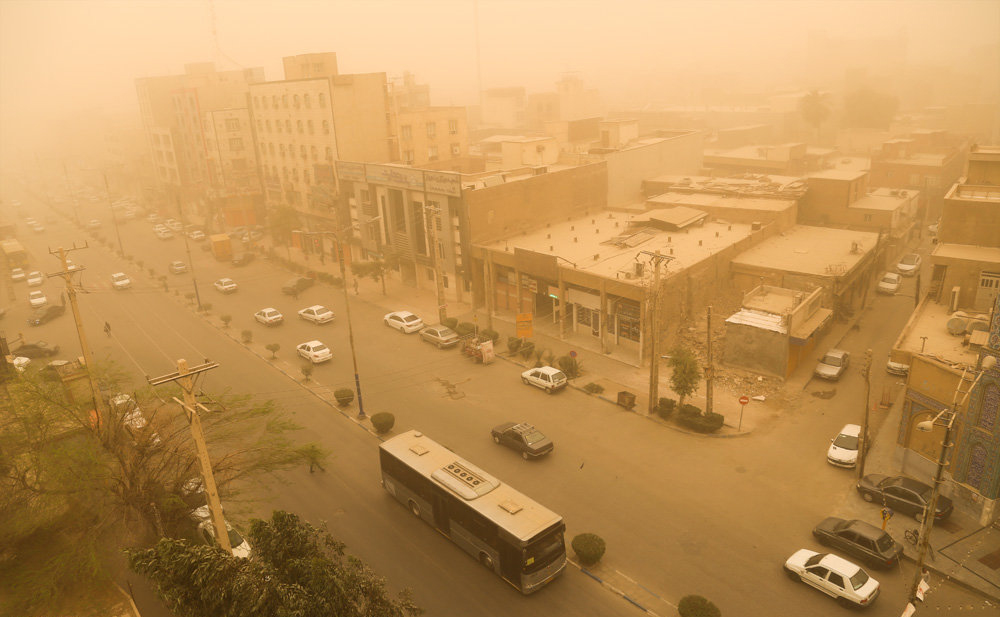A suffocating dust storm swept the oil-rich province of Khuzestan in southwestern Iran on Tuesday, dragging down air quality and visibility, closing down schools, and bringing flights to a standstill.
More than halfway into winter, the hazardous air pollution disrupted life in the provincial capital Ahvaz, with the amount of dust in the city being 60 times above the acceptable level, Tasnim News Agency reported.
Official data showed readings of small breathable particles, a major component of the country's air quality index, had risen to 9,000 micrograms per cubic meter in Ahvaz.
The World Health Organization recommends concentrations of no more than 10 micrograms.
Fine particulate matter can cause lung cancer, strokes, and heart disease over the long term, as well as trigger symptoms such as heart attacks that kill more rapidly.
The WHO says more than seven million premature deaths occur every year due to air pollution, three million of them due to outdoor air quality.
Experts say a combination of shrinking wetlands, drought, overall environmental deterioration in neighboring Iraq and Saudi Arabia, and mismanagement are to blame for the dust pollution in western Iran.


